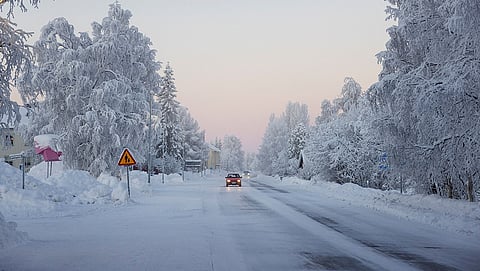

January 2024 saw bouts of extreme cold in northern Europe, when Sweden and Finland saw the mercury plummet to levels not seen in the past 25 years. Four months later, in May, Sicily in south Italy faced a drought so severe that it had to declare emergency. Four months after that, on October 29-30, Spain witnessed exceptionally heavy rain resulting in floods that killed 200 people—the highest death toll in a flood event in Europe since 1967.
The common thread that runs through these extreme events in Europe was their trigger—climate change caused by global warming. The scientific agreement on this has become possible with the emergence of a new stream of climate science called “attribution study”. Under this, scientists precisely measure the impact of climate change on a weather event, or assess if the particular event would have been different, both in frequency and intensity, without the climate change.
An attribution study takes time because it involves a vast number of simulations and calculations. In recent years, a new branch of this stream called “rapid attribution study” has evolved that gives a verdict on the contribution of climate change to an extreme weather event within a few weeks of its occurrence. The pioneer in rapid attribution studies is World Weather Attribution (WWA), an initiative by climate scientists from institutions across the globe. Between January and October 2024, scientists at WWA released 34 rapid attribution studies—the most in a calendar year since the initiative started in 2014. Of these, 28 studies are on significant extreme weather events—rains, floods and storms (17 studies); heatwaves (six studies); droughts and wildfires (two studies each); and cold spell (one study). The studies cover 26 events and show the rise in frequency and intensity of the events due to climate change.
Sample a few of the findings of these studies: The 2024 hurricane season in North America has seen 18 named storms as of November 15. This is nearly five storms more than the average of 13.8 named storms seen by November 10 in 1991-2020. Three catastrophic hurricanes this year—Beryl, Milton and Helene—are part of the 24 weather and climate disasters in US history that caused over $1 billion each in damages. Similarly, extremely heavy rainfall events, like the one that caused floods in West Asian nations in April, have become 10-40 per cent heavier due to climate change impacts.
WWA has also attributed the May-June heatwaves in Asia and Africa’s Sahel region to climate change. In a study released on May 28, WWA says that human-induced climate change has at least doubled the likelihood of such extreme heat events. It says that over the past one year, 6.3 billion people—about 78 per cent of the world’s population—experienced at least 31 days of extreme heat, defined as temperatures exceeding 90 per cent of historical norms for their region (based on the 1991-2020 average). The analysis also reveals that climate change contributes an average of 26 additional days of extreme heat globally, compared to conditions in a pre-industrial climate. The study states that climate change has made such extreme temperatures nearly 0.85ºC hotter than previous averages.
India is one of the regions that faced heatwaves this year. The country recorded heatwaves on at least 50 days in April-May, making it the third consecutive year of life-threatening high temperatures during the pre-monsoon season. The persistence of high temperatures affected numerous states, including Odisha, Andhra Pradesh and Kerala, with increased humidity exacerbating discomfort. In northwest and central India, the absence of western disturbances, coupled with prolonged dry spells and anticyclones, created an especially intense heatwave on May 16-31.
Overall, seven major attribution studies prove the link between climate change and extreme weather events experienced by India in 2024. The events include January’s severe cold wave, the scorching heatwaves in the pre-monsoon season, and the extreme rains and landslides in Kerala’s Wayanad district. The sudden rainfall that triggered landslides in Wayanad on July 30 was made 10 per cent more intense due to human-induced climate change, estimates WWA.
This was first published in the 1-15 December, 2024 print edition of Down To Earth